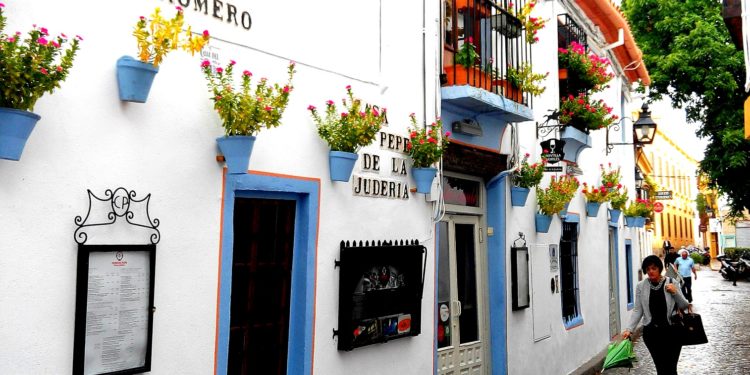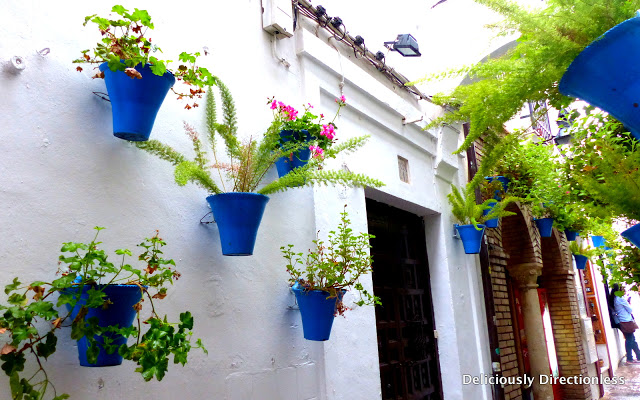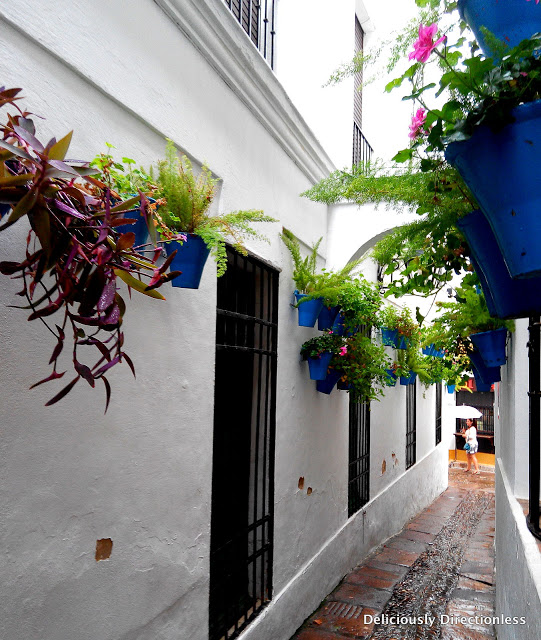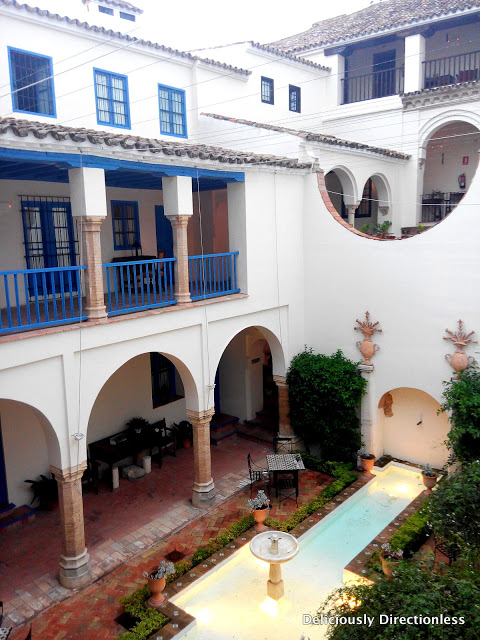
In the first of the Spain series, let me take you to Andalusia in southern Spain.Southern Spain has lots of Moorish influences, having been invaded and ruled by Islamic armies for years. And Córdoba is no exception. The evidence is everwhere – from its architecture to its food.In the 10th century Córdoba was said to be the most populous city in the world. However, today you’d be hard pressed to imagine it, especially if you come from a city like Mumbai! Córdoba truly caught my fancy for its quaintness and beauty – its whitewashed walls decorated with pots of flowers, its winding alleys leading to quiet courtyards, and its numerous churches of all shapes and sizes.
Córdoba’s historic centre is a UNESCO World Heritage Site and its star attraction is the Great Mosque, known locally as Mezquita Catedral. It is now a Catholic Cathedral, but its astounding Moorish architecture gives a clue about its history. The small Christian temple at the site was converted into a mosque when the Muslims invaded Spain in 711. In 784 the structure was demolished and the Grand Mosque took shape and was progressively expanded. During the Reconquista (reconquest), Spain went back to Christian rule and the mosque became a Roman Catholic Church in the 13th century.

 Inside, it is unlike any church you have ever seen – ‘surreal’ is the only word to describe it. Apart from installing chapels and a cathedral nave, the Christians left most of the Moorish architecture unchanged. The arcaded main hall has hundreds of pillars made of marble, granite and onyx, topped by double arches in alternating red and white stones. The highly ornate mihrab (the semi-cricular niche that denotes the direction of Mecca) is still retained. The mosque’s minaret was converted into the church’s bell tower. The massive complex houses the large Orange Tree Courtyard, which is planted with not just orange trees, but also palm, olive & cypress trees.
Inside, it is unlike any church you have ever seen – ‘surreal’ is the only word to describe it. Apart from installing chapels and a cathedral nave, the Christians left most of the Moorish architecture unchanged. The arcaded main hall has hundreds of pillars made of marble, granite and onyx, topped by double arches in alternating red and white stones. The highly ornate mihrab (the semi-cricular niche that denotes the direction of Mecca) is still retained. The mosque’s minaret was converted into the church’s bell tower. The massive complex houses the large Orange Tree Courtyard, which is planted with not just orange trees, but also palm, olive & cypress trees.
Apart from the Mezquita, Córdoba has other historical gems spanning various empires – from the majestic Roman bridge across the Guadalquivir River (and remains of a Roman temple and amphitheatre) to the well-preserved ruins of the fortified, medieval city of Medina Al-Zahra (13km outside the city).
However, to me, Córdoba is all about its numerous flower-filled courtyards (patios) and alleys.
Everywhere you turn, and especially down the Calleja de las Flores, the walls are studded with cobalt blue plant-holders from which burst a profusion of flowers and trailing vines. These gorgeous displays are on all year around, but every May, Córdoba really transforms into a riot of colours.
The annual La Fiesta de los Patios is the time when the homeowners decorate their patios with hundreds of flowers of all sorts – carnations, geraniums, jasmines, orange blossoms – and throw open their doors to visitors. There’s a competition for the most beautifully decorated patio.
Patios are a standard feature in most homes in Córdoba since Roman times. Homes are centred around an inner courtyard, which is filled with plants, flowers and water fountains to keep the house cool. The Patio Festival is a chance to get a look inside the private courtyards, which are otherwise off-limits. Don’t miss the Palacio de Viana (open all year around), which has not one, not two but twelve patios, all stunningly decorated!
Getting there
Where to stay & eat in Cordoba
The gorgeous Las Casas De La Judería is an elegant, boutique hotel in the Jewish quarter of Córdoba. The hotel was a former stately home and retains its 14th-century architecture and charm – there are pretty patios, water fountains and cosy nooks, not to mention labyrinthian (and confusing) corridors that connect the rooms & restaurants. The 64 rooms are tastefully & uniquely done up; they are very spacious and filled with typical furniture, decorations, and artwork of the region.

La Fragua is an atmospheric restaurant just around the corner from the hotel, housed in a 15th-century building. You can get a taste of fresh and seasonal Andalusian cuisine – from the traditional Salmorejo (a gazpacho-like, cold soup made with tomatoes, bread, olive oil and garlic) to Berenjana con miel (deep-fried aubergine slices drizzled with honey). Wash down your meal with the locally-brewed artisanal Califa Beer or a glass of the dark ruby red, sweet wine Pedro Ximénex Amanecer.




















Very colorful post!! I have never been here and really enjoyed traveling vicariously with you in Spain
Thank you, Margie! So glad you enjoyed the past 🙂
You captured Cordoba beautifully here, I'm gonna add this to my bucket list for sure.
xoxo – Chaicy
Style.. A Pastiche! – styleapastiche.com
Thank you, glad you liked it 🙂